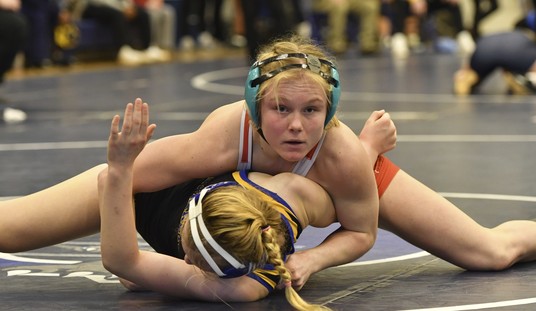We’re in another one of those pandemic moments with respect to this subject in which things happen before they happen. That is, we all know what the public-health bureaucracy’s going to do eventually, it’s just a matter of waiting around until they do it. The guidance advising against travel for vaccinated people will be changed, and soon. Just … not yet. The Johnson & Johnson one-shot vaccine was always going to be approved by the FDA once the company requested emergency-use authorization. Just … not immediately. There was a process that had to be followed, for several weeks as thousands more died.
In both of those cases, some urgent public need all but dictated the eventual outcome. Yeah, conceivably the FDA’s bureaucrats could have discovered a catastrophic flaw when reviewing the data from clinical trials that had eluded J&J’s scientists, but barring an error of that magnitude the vaccine was going to be okayed. The country’s need to immunize the population rapidly was destined to outweigh all but the gravest health risks from the vaccine itself. Same goes for letting vaccinated people travel. There’s some risk of seeding additional infections by encouraging them to move around, but Americans have been itching to return to normalcy for a year and are sure to do it once they’re immune no matter what the CDC says. The obvious move is to change the guidance and hope that doing so encourages people who are iffy about the vaccine to be tempted into getting it by the prospect of being able to travel again.
The same goes for the debate over whether students should be spaced three feet apart or six feet for safety reasons in schools, which I wrote about a few days ago. Ideally we’d play it safe by requiring six feet, as the CDC does now. But we don’t live in an ideal world; our world is one where classroom space is limited and students desperately, urgently need to resume their educations with meaningful in-class instruction at the earliest opportunity. We can concede that three feet will produce more infections than six feet will, as that’s what some data suggests:
For example, one CDC study of Georgia elementary schools released just this week found all nine clusters of COVID-19 outbreaks in the schools involved “less than ideal physical distancing,” often involving teachers coming too close to students and their colleagues. In many cases, students sat less than 3 feet from one another or from the teacher, with only plastic dividers distancing them…
Of course, many European schools are even smaller in square footage, so could 3-feet distancing suffice? A 2020 study in the journal The Lancet found that, across 16 countries, social distancing of at least 1 meter (3.3 feet) led to significantly lower transmission rates, but it did not compare 1 meter to 2 meters or more.
Another recent study from Massachusetts indicates no meaningful increase in transmissions at three feet of distancing among kids instead of six feet, however. Either way, the question isn’t whether one standard is riskier than the other. The question is whether the three-foot standard is so much riskier than the six-foot one that it’s better to ruin children’s educations by keeping them out of school for their own protection indefinitely than to let them back in and resign ourselves to a few additional infections happening.
And as we assess that risk, we need to remind ourselves that (a) kids who are infected seldom suffer physically because of it and (b) America is now vaccinating at a pace of several million adults per day, with teachers given priority to keep them safe.
It’s a no-brainer, which is why I say the CDC’s decision to switch to three feet of distancing as a guideline is something that’s already happened before it’s happened. They’re destined to do it. Especially since the current six-foot standard is based on, well, nothing, really:
The origin of the six-foot distancing recommendation is something of a mystery. “It’s almost like it was pulled out of thin air,” said Linsey Marr, an expert on viral transmission at Virginia Tech University.
When the virus first emerged, many experts believed that it was transmitted primarily through large respiratory droplets, which are relatively heavy. Old scientific studies, some dating back more than a century, suggested that these droplets tend not to travel more than three to six feet. This observation, as well as an abundance of caution, may have spurred the C.D.C. to make its six-foot suggestion, Dr. Marr said.
The Times notes that a Lancet study published last year found one meter of distance (roughly three feet) was effective in reducing transmission of several coronaviruses while allowing that two meters might be more effective. That’s logical — the further away you are, the fewer aerosols you’re apt to inhale. But again, we’re measuring relative risk. What’s the greater threat to kids a year after being out of class, a marginally greater chance of getting COVID or sustained developmental and emotional retardation?
Here’s Rep. Cathy McMorris Rodgers’s putting the question to CDC director Rochelle Walensky today. We’re looking to update our guidance, Walensky says. Just … not yet.
Last year, @CDCDirector Dr. Walensky gave this advice on social distancing in schools to her hometown mayor:
“If people wear a mask, it is quite safe and much more practical to be at three feet.”
When is the CDC going to update their guidance for schools? pic.twitter.com/PlpPWvyTDD
— CathyMcMorrisRodgers (@cathymcmorris) March 17, 2021







Join the conversation as a VIP Member